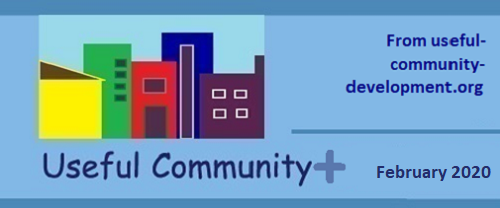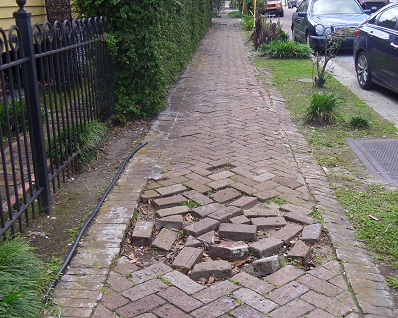| Back to Back Issues Page |
 |
|
Useful Community Plus February 27, 2020 |
Feature: Using Citizen Service Request Records New Articles on the WebsiteThis month we wrote a couple of articles for our economic development section. First, find out about building an innovation district, and whether your community can support such a major area where established but innovative firms mingle with start-ups and scale-ups. The second new article challenges you to think about whether a night mayor program might help you attract more nightlife and solve accompanying problems, or whether a night-time ambassador program could address issues for night shift workers in a focused way.We also wrote about the importance of minimum or maximum building setbacks, or both, in residential and commercial areas.
Feature: Citizen Complaints Tell You PlentyMany cities now have a system of recording all citizen service requests across departments. Analyzing the geography of these calls can provide helpful visualizations and new insights into the performance of your city.Neighborhood associations, block club leaders, activists, city staff, and elected officials can spot important trends if these reports from the public are coded and recorded faithfully in a systematic way. For best results complaints should be recorded in a GIS (computer-based geographic information system) to show spatial patterns. If no GIS capabilities are available, geo-code service requests by simply drawing boundaries on a map, giving each resulting area a number, using sticky dots to record types of citizen service calls, and tabulating results for each district you drew. Whether digital or physical, dot maps showing the location, date, time, and resolution of calls can help citizens and decision makers: • Understand
weaknesses in city services or utilities, resulting in budgeting and administrative action items Make your data visualization maps as widely available to your citizens and neighborhood associations as possible. In today's world citizens demand transparency from their city and town governments. In fact, if your city's system becomes sophisticated enough, you might try making it possible for any pre-approved resident or neighborhood group to add data on their own, rather than waiting for accurate recording of a phone, e-mail, or online service request. Get busy today in making sure your town has a visual means of showing the public where the problems are. If you are a citizen activist, don't let your government off the hook. No excuses allowed. |
| Back to Back Issues Page |
